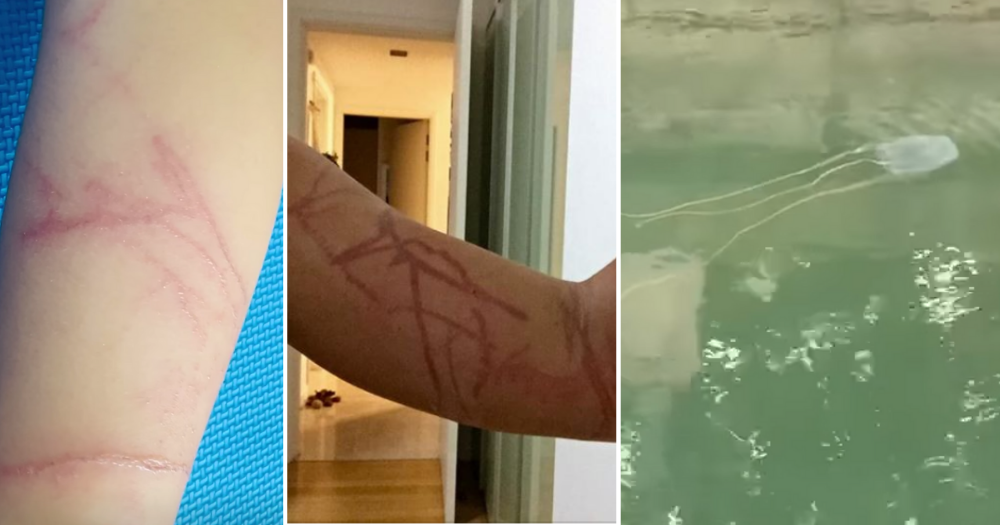There have been several sightings of box jellyfish in Sentosa recently, including a young girl who was believed to have been stung on July 17.
The species is highly venomous, and its stings are extremely painful and can cause severe hypertension, extreme lower back pain, nausea, cardiac and respiratory arrest.
It can also be fatal.
Vinegar, not urine
In response to these sightings of box jellyfish at Sentosa, the National Parks Board (NParks) has released an advisory on the species which would help Singaporeans should they encounter one in the waters.
Contrary to popular opinion, it might be better to take a bottle of plain vinegar, instead of resorting to pee when dealing with jellyfish stings.
An aquarist from Resorts World Sentosa's S.E.A. Aquarium has clarified the misconception.
Aquarist Vivian Cavan explained that applying vinegar to the stings helps stop the jellyfish's nematocysts (microscopic stingers) from discharging from venom.
The solution of urinating on the victim's stings is an urban myth, and doesn't help and could even cause more pain.
According to NParks, here are some of the first aid measures victims, or passers by, can take if the pain is severe:
- Get the victim to shore immediately.
- Seek immediate medical attention by calling 995. Stings covering more than half of one limb are considered life-threatening.
- A trained emergency first responder may perform CPR if necessary.
- Keep the victim calm and still to minimise additional venom discharge from tentacles, and under shelter.
- Do not rub the wound or attempt to remove the tentacles with your hands—this can cause the stinging cells to release more venom into the body.
- Flood the sting area with seawater, and if available, plain vinegar, for at least 30 seconds. Do not use freshwater, urine or any other substance. If vinegar causes the pain to worsen, cease using it and use seawater only; some non-box jellyfish stings may get more painful if exposed to vinegar.
- After flooding, remove the tentacles using a towel or tweezers.
Jellyfish are venomous, not poisonous
Cavan, who cares for the jellyfish exhibits at the aquarium, also made the clear distinction between poisonous and venomous creatures.
Creatures that are poisonous are those that release their toxins when they are eaten, while those that are venomous bite or sting to inject toxins.
Box jellyfish are thus venomous, and not poisonous.
Currently, S.E.A. Aquarium showcases three species of jellyfish—moon jellies, blue blubber jellies and Atlantic sea nettles.
The aquarium also breeds a variety of other species to ensure that there is a sustainable population of captive jellyfish, which would reduce the reliance on suppliers.
Take precautions when engaging in sea sports
Symptoms of box jellyfish stings include:
- Immediate, increasing, and extreme pain
- Imprint of tentacles whipped on skin, usually with ladder-like pattern
- Whitish strings adhering to skin
- Breathing difficulties
- Nausea
- Dizziness
The severity of these symptoms depend on the victim's condition and the degree of stinging.
Symptoms may arise 15 to 20 minutes after being stung.
NParks advises swimmers and boaters to avoid swimming or engaging in sea sports alone. They are also advised to wear long-sleeved shirts and pants when engaging in such activity and to leave as little skin exposed as possible.
Top photo from Marine Stewards / FB
If you like what you read, follow us on Facebook, Instagram, Twitter and Telegram to get the latest updates.
